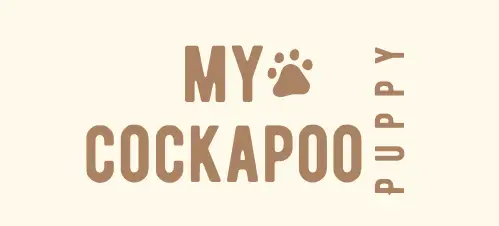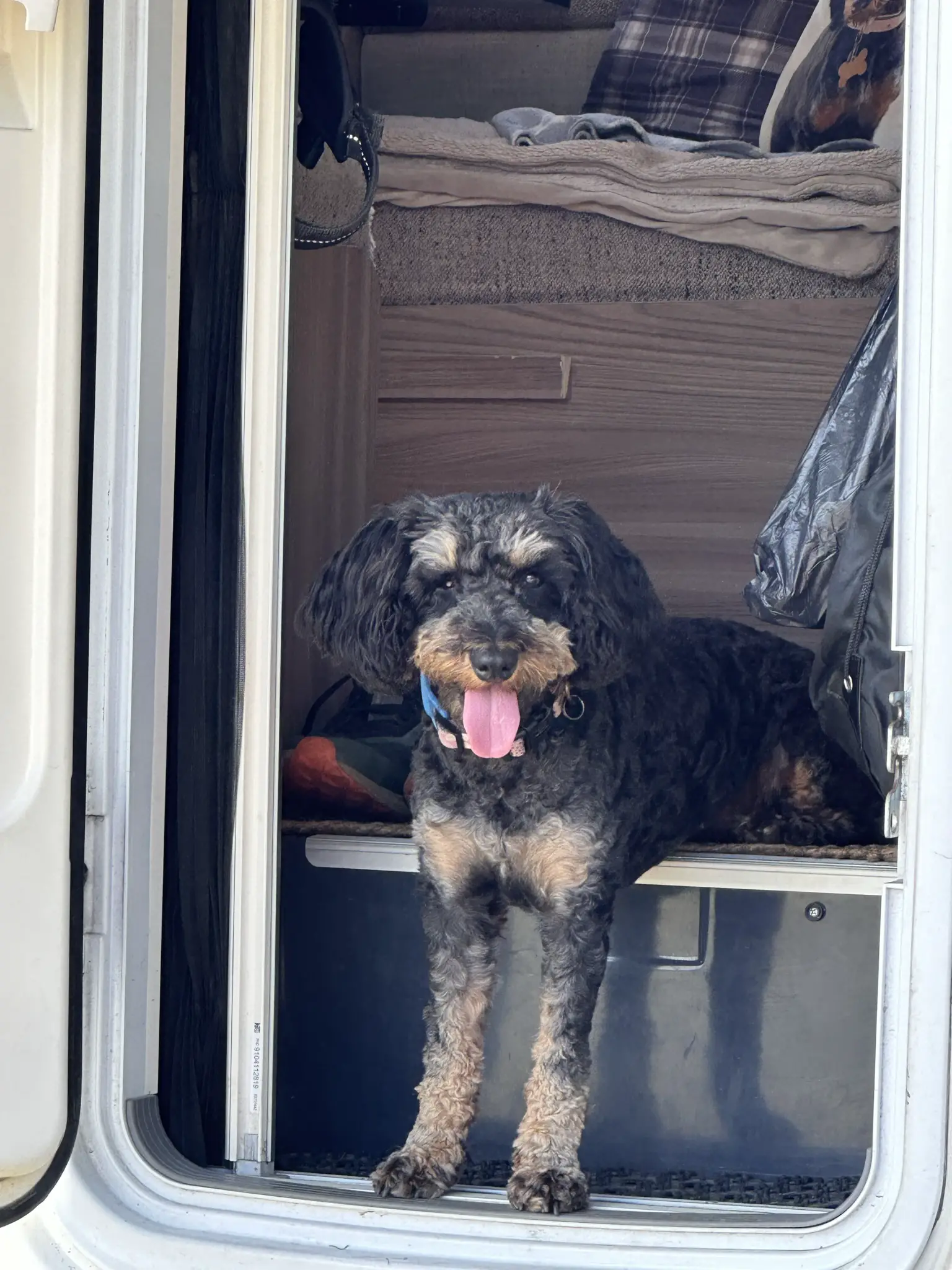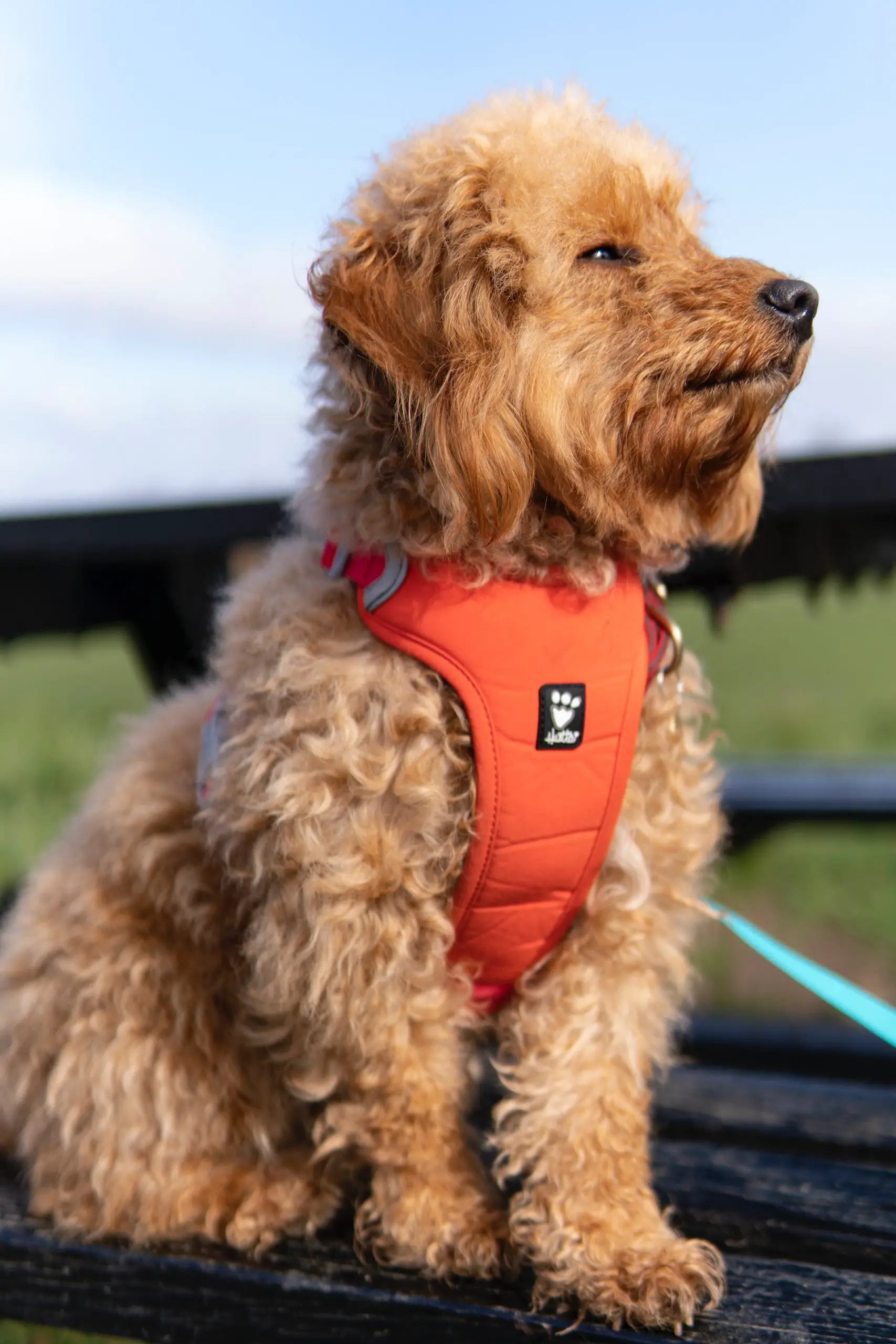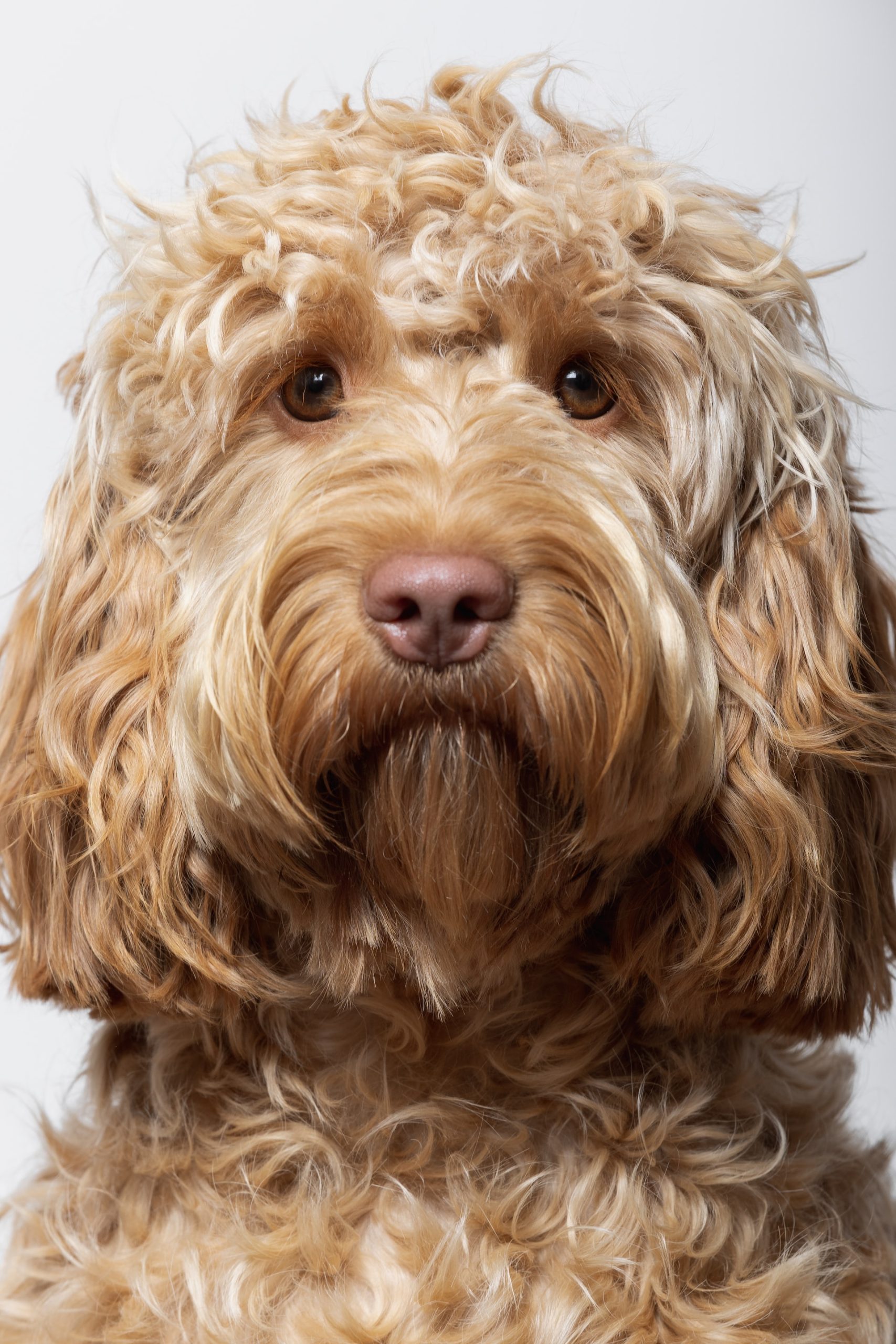Have you ever noticed your lovable Cockapoo acting a bit differently when you are about to leave home?
Well, fret not, because you are not alone in this. Many Cockapoo parents, including ourselves, find themselves facing the same issue: separation anxiety.
But what is it exactly and how can it be addressed? Join us as we delve into the nitty-gritty of understanding and combating Cockapoo separation anxiety.
Understanding Cockapoo Separation Anxiety
Firstly, let’s understand what we mean by separation anxiety.
Separation anxiety in Cockapoos is a situation where your furry friend exhibits stress and behavioural issues when they are left alone or separated from their favourite humans.
It’s a condition that is not just confined to Cockapoos but is prevalent among various dog breeds.
Importance of Addressing Separation Anxiety
Ignoring the signs of separation anxiety can lead to escalating problems, affecting both the mental well-being of your Cockapoo and the tranquillity of your home.
Owners may find themselves not wanting to leave their dog alone, struggling to try and find people to take care of them if they have to go out, and it creates an issue that doesn’t have to be there.
It is thus imperative to nip this issue in the bud before it escalates further.
Recognising the Signs
Being able to promptly recognise the signs of separation anxiety in your Cockapoo can pave the way to a quicker and more effective solution. These signs often span both physical and emotional realms, indicating the distress your furry friend is experiencing. Let’s delve into these signs a bit more to get a comprehensive understanding:
Physical Signs
Spotting physical signs is an essential step in addressing the problem early on. Here are some of the physical signs your Cockapoo may exhibit:
- Unusual Behaviour
- Excessive Salivation: You might notice your Cockapoo salivating more than usual when they sense you are about to leave.
- Potty Accidents: Despite being potty trained, your Cockapoo might start having accidents inside the house, indicating distress.
- Pacing: Your dog might start pacing in a fixed pattern, unable to settle down when they sense your imminent departure.
- Destructive Activities
- Chewing on Furniture: In an attempt to relieve their stress, your Cockapoo might resort to chewing on furniture or other household items.
- Digging Up the Garden: Some dogs express their anxiety by digging incessantly, potentially ruining your garden in the process.
- Scratching Doors and Walls: In a bid to reunite with you, your Cockapoo might start scratching doors and walls, trying to find a way to reach you.
Emotional Signs
In addition to physical signs, your Cockapoo might also show signs of emotional distress. Here are some of the emotional symptoms to watch out for:
- Whining or Crying
- Continuous Whining: A persistent, high-pitched whine can be a clear indication of your Cockapoo’s anxiety.
- Barking Excessively: Your normally quiet Cockapoo might start barking excessively, trying to vocalise their distress.
- Howling: In some cases, Cockapoos might even resort to howling, especially if they were previously quiet when left alone.
- Clinginess
- Shadowing: Your Cockapoo might start following you everywhere, afraid to let you out of their sight.
- Excessive Affection: As a bid to keep you with them, they might become overly affectionate, showering you with love and cuddles more than usual.
- Separation Anxiety in the Car: Your Cockapoo might become anxious even during short separations, like when you leave them in the car for a few minutes.
Understanding these signs can help you take swift action, possibly preventing the situation from escalating.
It’s essential to approach this with a lot of empathy and patience, ensuring your Cockapoo feels safe and loved, even when you need to step out for a bit.
Remember, your furry friend is not acting out on purpose; they are merely expressing their distress in the only way they know how to.
The Underlying Causes
Understanding the underlying causes can be a pathway to developing strategies to mitigate the anxiety. Let’s have a look at some of the common causes:
Lack of Socialisation
A lack of proper socialisation at an early age can be a significant factor contributing to separation anxiety.
Sudden Changes
Sudden changes in the environment or daily routine can trigger anxiety in your Cockapoo.
Past Trauma
Past traumatic experiences can also be a root cause for the development of separation anxiety.
Effective Strategies to Mitigate Separation Anxiety
Combatting separation anxiety in your Cockapoo is not a one-size-fits-all affair; it involves a combination of training, creating a conducive environment, and possibly, seeking professional help.
Below, we dig deeper into some strategies that might prove effective in helping your canine companion overcome their anxiety:
Training
Training is a crucial step in helping your Cockapoo adapt to periods of separation. Here’s how you can approach it:
- Consistency:
- Routine: Establishing a regular routine helps in providing a sense of security to your Cockapoo. Maintain consistent times for walks, meals, and playtime.
- Calm Departures and Arrivals: Make your departures and arrivals as calm as possible. Avoid making a big fuss when you leave or come back home to prevent heightening their anxiety.
- Gradual Adaptation:
- Incremental Separation: Begin by separating from your Cockapoo for short durations and gradually increase the time. This helps them understand that you will return.
- Training to Stay Calm: Train your Cockapoo to stay calm when they are alone. You can use commands like ‘stay’ and reward them when they manage to stay calm during your absence.
Environment
Creating a conducive environment can greatly help in reducing separation anxiety. Here are some strategies:
- Safe Spaces:
- Comfortable Resting Area: Create a comfortable area where they can rest and feel secure. This could be a crate or a specific room where they have all their favourite toys and a comfy bed to sleep in.
- Personal Items: Leave a piece of your clothing or a personal item with them, so they have your scent around, which can be comforting.
- Engaging Toys:
- Puzzle Toys: Provide them with puzzle toys that can keep their mind occupied and divert their attention from your absence.
- Chew Toys: Invest in some chew toys which can help in relieving anxiety as they can take their frustration out on these toys instead of household items.
- Distraction Techniques:
- Music or Television: Leave the music or television on at a low volume to provide some background noise that can comfort them.
- Window View: If possible, allow your Cockapoo a view of the outside world through a window to keep them entertained.
Physical and Mental Stimulation
- Exercise: Ensure your Cockapoo gets sufficient physical exercise before you leave. A tired dog is less likely to exhibit anxiety symptoms.
- Mental Stimulation: Engage them in activities that provide mental stimulation. This can be through games that challenge their mind, keeping them occupied for a longer duration.
Positive Reinforcement
- Reward Calm Behaviour: When your Cockapoo manages to stay calm during your absence, reward them with treats and praise to reinforce the behaviour.
- Desensitisation: Desensitise them to the triggers that cause anxiety. This could be picking up keys or wearing shoes. Start doing these activities but do not leave immediately to break the association with your departure.
By applying a combination of these strategies, you can create a comprehensive plan that works for your unique Cockapoo, fostering a happier, healthier relationship and environment for both of you.
It’s essential to be patient and consistent in your approach, recognising that progress might be slow but will be worth the effort in the long run.
Our own cockapoo, Lottie, used to display signs of separation anxiety when she was a puppy. Using the tips we have listed above, we managed to significantly improve this to the point where we think she now enjoys her own space and time when we leave! And the excitement when we return home has never faded.
Seeking Professional Help
Sometimes, despite our best efforts, professional help is needed to address the issue effectively. Here’s how to go about it:
When to Consult a Vet?
It is wise to consult a vet if you notice persistent signs of separation anxiety that are not alleviating despite your efforts.
Choosing a Dog Behaviourist
Choosing a competent dog behaviourist can provide the necessary guidance and strategies to help your Cockapoo overcome separation anxiety.
Conclusion
In conclusion, dealing with a Cockapoo’s separation anxiety might seem daunting, but with the right strategies and guidance, it can be managed effectively.
Remember, a happy Cockapoo makes for a peaceful home. So, arm yourself with the necessary knowledge and march forward to make a difference in your furry friend’s and your own life.
Frequently Asked Questions
1. What is Cockapoo separation anxiety?
Cockapoo separation anxiety is a condition where your Cockapoo experiences significant distress and exhibits anxiety-related behaviours when separated from their primary caregivers or left alone for an extended period.
2. How can I identify the signs of separation anxiety in my Cockapoo?
Identifying the signs of separation anxiety in your Cockapoo involves being vigilant about changes in their behaviour, especially during the times you are preparing to leave or have left home. Physical signs can include destructive behaviours such as chewing on furniture, digging up the garden, or having potty accidents indoors. Emotional signs are often more vocal, including persistent whining, crying, or barking, and showing clingy behaviour like following you around more than usual. The key is to observe any significant changes in their normal behaviour patterns, which indicate distress during periods of separation.
3. What are the underlying causes of separation anxiety in Cockapoos?
Separation anxiety in Cockapoos can be attributed to a variety of factors, which might include:
Genetic Predisposition: Some dogs are genetically more prone to experiencing anxiety.
Improper Socialisation: Puppies that haven’t been adequately socialised may develop separation anxiety.
Sudden Changes in Schedule: A sudden change in your daily routine can disrupt your Cockapoo’s sense of security, leading to anxiety.
Traumatic Experiences: Traumatic experiences such as a move, a stay at a shelter, or losing a loved one can trigger separation anxiety.
Age-related Cognitive Decline: Older dogs might develop separation anxiety due to cognitive decline as they age. Understanding the potential underlying causes can help in formulating an effective strategy to manage and mitigate the symptoms.
4. What strategies can be employed to mitigate separation anxiety?
Mitigating separation anxiety in your Cockapoo involves implementing a series of strategies that centre on training, creating a conducive environment, and ensuring physical and mental stimulation. This includes maintaining a consistent routine, gradually getting them accustomed to periods of separation, creating a comfortable and safe space, and providing engaging toys that can help keep them occupied during your absence.
5. When should I consider seeking professional help for my Cockapoo’s separation anxiety?
Considering seeking professional help becomes necessary when the separation anxiety symptoms escalate to a point where they are causing harm to your Cockapoo or significantly disrupting your household.






